Eyespot (Hi-spot) Rasbora - Brevibora dorsiocellata
Scientific name: Brevibora dorsiocellata
Common name: Eyespot (Hi-spot) Rasbora
Family: Cyprinidae
Usual size in fish tanks: 3 - 4 cm (1.18 - 1.57 inch)
014
Recommended pH range: 6 - 7
Recommended water hardness: 0 - 10°N (0 - 178.57ppm)
0°C 32°F30°C 86°F
Recommended temperature range: 20 - 25 °C (68 - 77°F)
The way how these fish reproduce: Spawning
Where the species comes from: Southeast Asia
Temperament to its own species: peaceful
Temperament toward other fish species: peaceful
Usual place in the tank: Middle levels
General Information
The Eyespot (Hi-spot) Rasbora (Brevibora dorsiocellata, long traded as Rasbora dorsiocellata) is a small, peaceful shoaling cyprinid native to Southeast Asia—the Malay Peninsula (incl. Singapore), Sumatra and Borneo, with records into southern Thailand. In nature it inhabits shaded forest streams, backwaters and peat-swamp blackwaters with soft, acidic conditions and leaf litter. Typical adult size is ~3–4 cm (≈1.2–1.6″); it is a genuinely small rasbora. Keep in groups of 8 for confidence and natural schooling.
Food and Feeding
An omnivorous micro-predator. Use quality flakes or micro-granules as staple; rotate small live or frozen foods (brine shrimp nauplii, daphnia, cyclops, finely chopped bloodworms). In the wild it feeds on worms, crustaceans and insects. Offer tiny portions 1–2× daily so all food is eaten quickly.
Sexing
External differences are subtle; females are fuller-bodied when gravid, males a touch slimmer. Sexing juveniles is unreliable.
Breeding
A typical rasbora egg-scatterer with no parental care. For best yields use a separate, dimly lit tank with very soft, slightly acidic water, fine-leaved plants or spawning mops, and gentle flow. Remove adults post-spawn to prevent egg predation. Eggs usually hatch in ~24–36 h; start fry on infusoria, then newly hatched brine shrimp.
Lifespan
Commonly 3–5 years with clean, stable water and a varied diet (small rasboras trend shorter-lived at warmer temperatures).
Tank Requirements & Water Parameters
- Footprint: length and surface cover matter more than height; even small groups benefit from a 60 cm/24″ tank for stability.
- Water: pH ~6.0–7.0; hardness ~0–10 °dH; temperature 20–25 °C—this matches documented blackwater conditions. Keep parameters stable.
- Environment: dark substrate, leaf litter, roots/driftwood, dense marginal and floating plants to diffuse light; gentle flow; quality filtration.
- Maintenance: small, regular water changes; avoid abrupt swings.
Compatibility & Tank Mates
Peaceful schooling fish. Combine with other small, calm species (tiny rasboras/tetras, peaceful dwarf gouramis, pygmy Corydoras). Avoid large or boisterous fish that outcompete them at the surface or view them as prey.
Behaviour & Usual Place in the Tank
Middle to upper levels: an active mid-water shoaler that often cruises just below the surface in shaded areas, dropping lower when startled. Provide open lanes among plants for schooling.
Short Description
Eyespot/Hi-spot Rasbora (Brevibora dorsiocellata) is a tiny Southeast Asian blackwater rasbora. Keep in groups, feed varied small foods, and provide soft-acidic, dimly lit, plant-shaded water for best colour and behaviour.
Q&A
- Oceania or Southeast Asia? Southeast Asia: Peninsular Malaysia (incl. Singapore), Sumatra & Borneo; also recorded in southern Thailand.
- How big do they really get? Reputable sources list ~3–4 cm adult size; some older/secondary sources claim 6 cm, which is inconsistent with modern references.
- Do they need very acidic water? Soft, slightly acidic to neutral works well; stability and cleanliness matter most (blackwater setups are ideal).
Pictures
Bought by aqua-fish.net from jjphoto.dk.
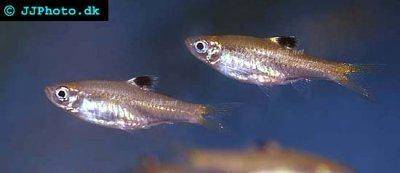



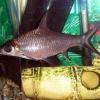 Bala
Bala 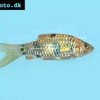 Spotted
Spotted 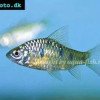 Golden
Golden 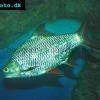 Tinfoil
Tinfoil 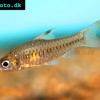 Congo
Congo 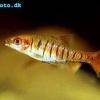 Blue-barred
Blue-barred 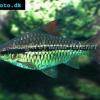 African
African 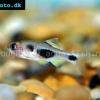 Butterfly
Butterfly 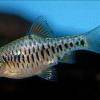 Olivegreen
Olivegreen 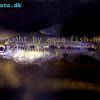 Morse
Morse 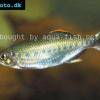 Jerdon’s
Jerdon’s 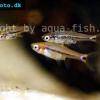 Mosquito
Mosquito 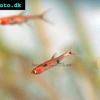 Dwarf
Dwarf 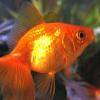 Goldfish
Goldfish 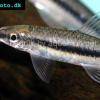 Penguin
Penguin 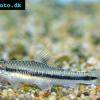 Siamese
Siamese 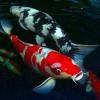 Koi
Koi 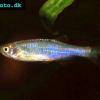 Pearl
Pearl 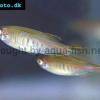 Glowlight
Glowlight 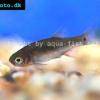 Crossbanded
Crossbanded 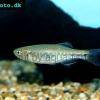 Yoma
Yoma 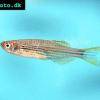 Orange
Orange 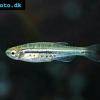 Dwarf
Dwarf 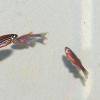 Zebra
Zebra 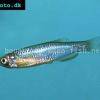 Rose
Rose 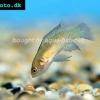 Red
Red 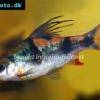 Arulius
Arulius 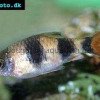 Tambraparni
Tambraparni 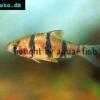 Fiveband
Fiveband 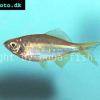 Bengal
Bengal 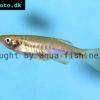 Tiger
Tiger 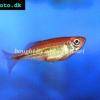 Malabar
Malabar 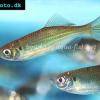 Queen
Queen 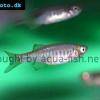 Hora
Hora 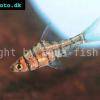 False
False 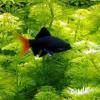 Redtail
Redtail 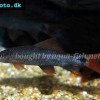 Rainbow
Rainbow 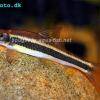 Flying
Flying 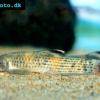 Garra
Garra 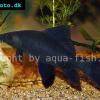 Black
Black 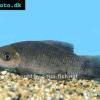 Purple
Purple 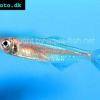 Burmese
Burmese 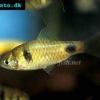 Dwarf
Dwarf 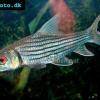 Isok
Isok 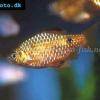 Rosy
Rosy 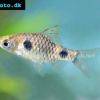 Two
Two 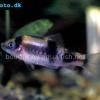 Melon
Melon 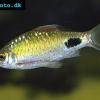 Black-spot
Black-spot 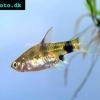 Golden
Golden 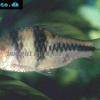 T-Barb
T-Barb 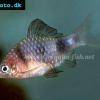 Ruby
Ruby 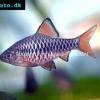 Checkered
Checkered 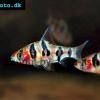 Rhomb
Rhomb 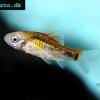 Gold
Gold 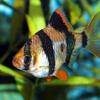 Tiger
Tiger 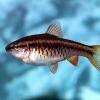 Cherry
Cherry 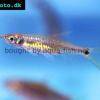 Brittan’s
Brittan’s 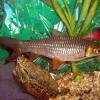 Greater
Greater 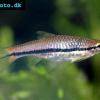 Long-band
Long-band 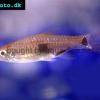 Twospot
Twospot 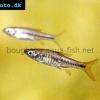 Reticulate
Reticulate 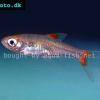 Cherry
Cherry 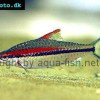 Denison
Denison 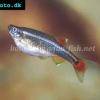 White
White 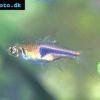 Lambchop
Lambchop 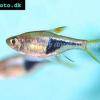 Harlequin
Harlequin